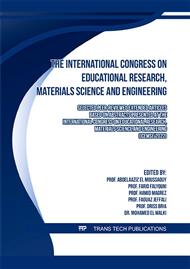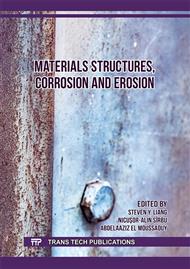p.71
p.77
p.89
p.95
p.103
p.109
p.117
p.125
p.133
Tuning the Diamagnetic Susceptibility and Electron Average Position in a GaAs Hemi-Spherical Quantum Dot with an Off-Center Donor Atom
Abstract:
The Langevin theory of diamagnetism is used to examine the effects of geometric confinement and hydrogenic impurity location on the diamagnetic susceptibility in a GaAs hemispherical quantum dot with an infinite confinement potential considered as vacuum. Using the finite difference approach and the effective mass approximation, the electron-donor Schrödinger equations are derived. As a function of the size of the hemi-spherical quantum dot, the mean value of the electron location and electron to ionized donor atom distance are investigated, taking into account the various impurity positions. The results show that shrinking the size of the hemi-spherical quantum dot improves the diamagnetic susceptibility by reducing the electron-donor distance. The major findings show that the donor impurity location has a significant impact on the diamagnetic susceptibility. We believe that the findings from our work into the diamagnetic susceptibility of quantum dots will be crucial in determining how well optoelectronic devices will operate.
Info:
Periodical:
Pages:
125-131
Citation:
Online since:
September 2023
Price:
Сopyright:
© 2023 Trans Tech Publications Ltd. All Rights Reserved
Share:
Citation:



